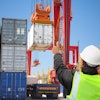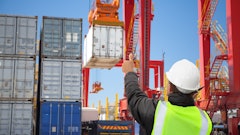
Ports across North and South America and Europe are showing sharp increases in the number of days the containers are staying inside port compared to last month, according to data released by Beacon.
“May’s data reflects a reality of delays in container dwell times,” says the Beacon analytics team. “We are seeing a shift in delay patterns—where the issue is no longer just ships waiting at sea, but terminals struggling to move boxes off the yard. That is where the bottleneck now lives.”
Key takeaways:
· Kingston (Jamaica) was the worst performer in May, with containers lingering for more than 12 days in the terminal. This significant deterioration in yard fluidity reinforces the broader regional concern around cargo throughput inefficiencies in these ports.
· Chittagong (Bangladesh) continues to struggle, with ships waiting for over 71 hours to berth, driven by extended berth operations and recurring anchorage queues. This marks a second consecutive month where Chittagong remains one of the least efficient ports globally.
· Meanwhile in South America, Colón (Panama) and Cartagena (Colombia) surfaced as emerging hotspots—not due to ship delays offshore, but due to slow yard movements, with average container dwell times exceeding 9 and 8.5 days, respectively.
· In Africa, in terms of ship turnaround times, Durban recorded a high of 3.8 days on average at berth while Taipei had the lowest at 0.38 days.
· Mombasa (Kenya) followed Durban in terms of long berth stays in May at nearly 3.7 days, while containers waited more than 4.5 days raising concerns about regional bottlenecks as trade volumes continue to grow through East Africa’s key gateway
· Although the total number of ships handled across all regions in May was 11% less than April, the positive outcome was that the number of ships at anchorage dropped by almost 27% in May.




















